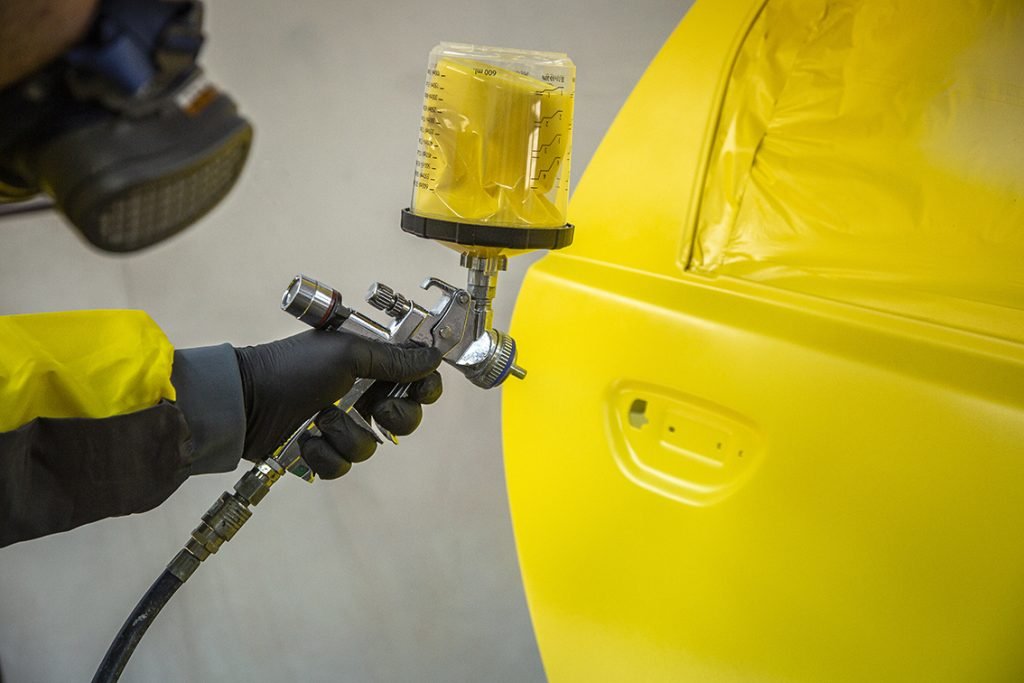Automotive Paint Restoration Guide

Automobile paint often fades and deteriorates over time due to exposure to the elements, scratches, and general wear and tear. Restoring the paint can not only enhance the appearance of your vehicle but also protect it from further damage. In this guide, we will walk you through the process of automotive paint restoration, with a particular focus on the use and importance of masking film for painting.
Preparing for Paint Restoration
Before you begin the restoration process, it’s essential to properly prepare your vehicle. Start by washing the car thoroughly to remove any dirt, grime, and debris. Use a high-quality car wash soap and a soft sponge or microfiber cloth to avoid scratching the paint. Once the car is clean, dry it completely with a clean towel.
Next, inspect the paint for any deep scratches, chips, or rust spots. If you find any significant damage, it may be necessary to address these issues before proceeding with the paint restoration. For minor scratches, you can use a scratch remover or polishing compound. For deeper scratches or chips, you may need to use a touch-up paint or consider professional repair.
Using Masking Film for Painting
Masking film for painting, also known as painter’s tape or masking tape, is an essential tool for automotive paint restoration. It helps protect areas of the car that you don’t want to paint, such as windows, trim, and badges. Here’s how to use it effectively:
1、Clean the areas around the areas to be painted. Use a mild cleaner and a soft cloth to remove any dirt or wax.
2、Measure and cut the masking film to the appropriate size. Make sure it’s long enough to cover the entire area you want to protect.
3、Apply the masking film carefully. Start at one end and smooth it out as you go, making sure there are no wrinkles or bubbles. Press down firmly along the edges to ensure a good seal.
4、Once the masking film is in place, you can begin painting. Be careful not to spray too close to the masking film, as this can cause the paint to bleed under the tape.
The Importance of Masking Film
Masking film plays a crucial role in automotive paint restoration for several reasons:
1、Protection: It protects areas of the car that are not being painted from overspray, drips, and scratches. This helps ensure a clean and professional-looking finish.
2、Precision: By using masking film, you can create clean lines and edges, giving your paint job a more refined look.
3、Time-saving: Masking film saves time by allowing you to paint only the areas that need it, rather than having to mask off individual parts by hand.
4、Versatility: Masking film can be used on various surfaces, including glass, plastic, and metal, making it a versatile tool for any paint restoration project.
Painting the Car
Once you have prepared the car and applied the masking film, it’s time to paint. There are several options for painting your car, including using spray paint cans, professional spray guns, or taking your car to a professional auto body shop.
If you choose to use spray paint cans, make sure to follow the instructions on the can carefully. Shake the can well before use and hold it about 6-8 inches away from the surface. Apply several light coats rather than one heavy coat to avoid runs and drips.
For a more professional finish, you may want to consider using a professional spray gun. This requires more equipment and skill, but it can give you a better result. Make sure to wear appropriate safety gear, such as a respirator and goggles, when using a spray gun.
Finishing Touches
After the paint has dried, carefully remove the masking film. Start at one end and peel it back slowly to avoid pulling off any newly painted areas. Inspect the paint for any imperfections, such as runs, drips, or areas that need touch-up.
If necessary, you can use a polishing compound or wax to further enhance the shine and protect the paint. Apply the polishing compound or wax with a soft cloth and buff it to a smooth finish.
In conclusion, automotive paint restoration can be a rewarding project that can transform the look of your car. By following these steps and using masking film for painting effectively, you can achieve a professional-looking finish and protect your vehicle from further damage. Whether you choose to do the restoration yourself or take your car to a professional, the key is to take your time, follow the instructions carefully, and use the right tools and materials.

